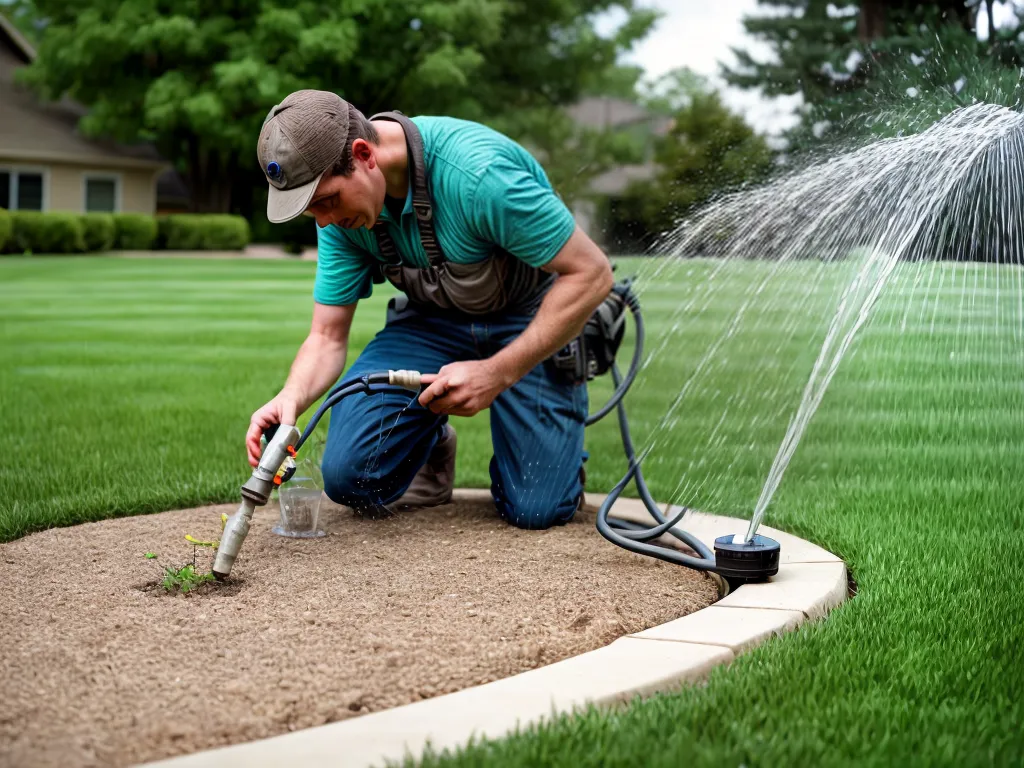
Rewiring your lawn's irrigation system can seem daunting, but with some planning and the right techniques, it's very doable as a DIY project. Here are six uncommon tips to make rewiring your sprinklers easier and more effective.
Choosing the Right Wire Gauge
The gauge, or thickness, of wire you use for your irrigation system is crucial. Thicker wire is able to handle more current. For sprinkler systems, you'll want to use 12 or 14 gauge wire. This will prevent voltage drop over long cable runs and allow all of your sprinklers to operate properly.
- 12 gauge wire is recommended for runs under 100 feet. It provides low resistance and is unlikely to overheat.
- For runs over 100 feet, use 10 gauge wire. The extra thickness keeps resistance to a minimum.
- Avoid thin 18 or 20 gauge wire. It simply can't handle the load for an irrigation system.
Using the proper wire gauge will lead to a system that activates reliably when you need it to.
Installing a Dedicated Valve Manifold Box
Rather than having valves scattered around your lawn, install them all in one dedicated box. This makes your irrigation valves far more accessible down the road.
- Use a weather resistant plastic or composite valve box. Make sure it's large enough to house all valves.
- Position it close to the home but not directly against the foundation.
- Install a gravel base for drainage before placing the box.
- Run all valve control wires to this central location.
With a dedicated valve manifold box, you'll be able to quickly find, access, and service your system's valves. No more hunting around the yard!
Organizing Wires by Color
When rewiring your irrigation system, adopt a color coding convention for the various wire types. This makes troubleshooting and repairs much simpler.
- Use red wires for all power lines. This is easy to remember as a safety precaution.
- Run blue wires to each valve. Keep them organized in your valve box.
- Use green for ground wires. The color association helps avoid confusion.
- Let white be for common neutral lines. Keep them bundled together.
With color-coded wires, you'll be able to quickly identify and fix any problems down the road.
Installing a Master Shut Off Valve
A master shut off valve allows you to stop all water to your irrigation system with a single valve. This makes repairs and emergencies like leaks far less of a headache.
- Position the master valve between the water supply and all other valves. This lets it instantly stop all downstream water flow.
- Use a heavy duty brass or stainless steel valve built for frequent use.
- Allow room for a ball valve handle to easily turn the water on and off.
- Place it near the valve manifold box for quick access.
With a master shut off in place, you'll have the convenience of an instant kill switch for your entire sprinkler system.
Building a Scale Map of Your System
To keep your wiring project organized, assemble a scaled map showing the layout of your irrigation system. This helps immensely with planning and troubleshooting.
- Use graph paper to draw irrigation lines to scale. Note lengths.
- Mark sprinkler head locations and label them clearly.
- Indicate the spots where valves and wires intersect lines.
- Add a legend for color coding wires.
With a detailed scale map, you'll better understand how everything interacts. It's an invaluable resource when issues eventually arise.
Installing Extra Wire Loops at Components
When wiring runs up to sprinkler heads or valves, always leave some extra coiled wire. This allows the components to be relocated or adjusted if necessary.
- Coil at least 12 extra inches of wire at all endpoints.
- Use twist ties to neatly organize the excess.
- Label wires to identify their corresponding sprinklers or valves.
- Store extra in your valve box for future use.
Having this extra wire on hand makes altering or fixing your system much easier. You won't have to splice in new wire right away.
Conclusion
Rewiring an irrigation system takes planning and attention to detail, but these uncommon tips will set you up for success. Choosing the right gauge wire, installing a central valve box, color coding, shutting off water, mapping your system layout, and having spare wire available will all make a complex project more manageable. With some diligence and these techniques, you can have your rewired sprinklers operating smoothly.